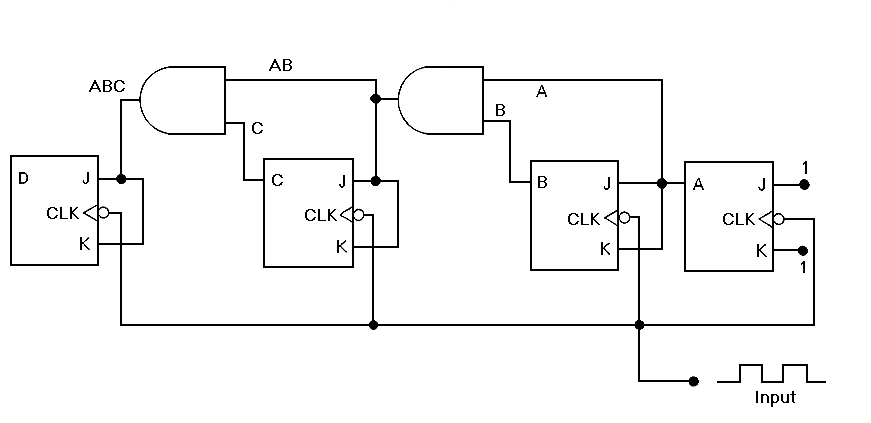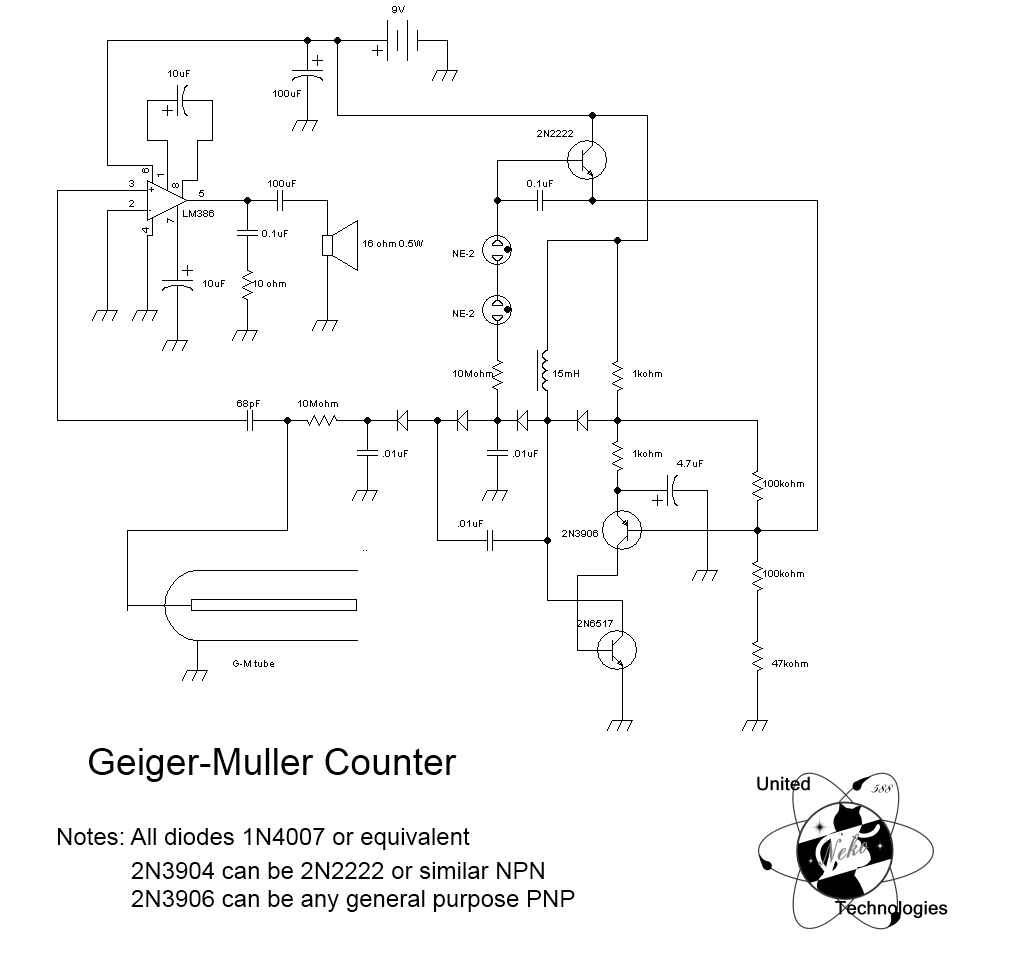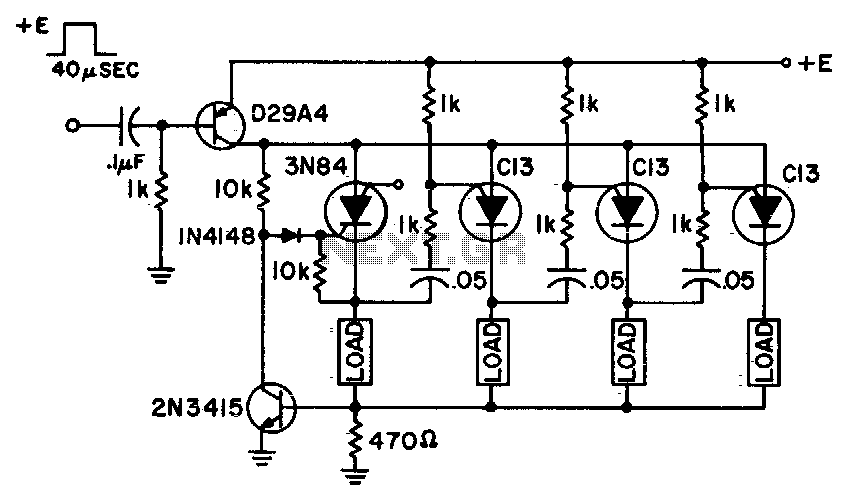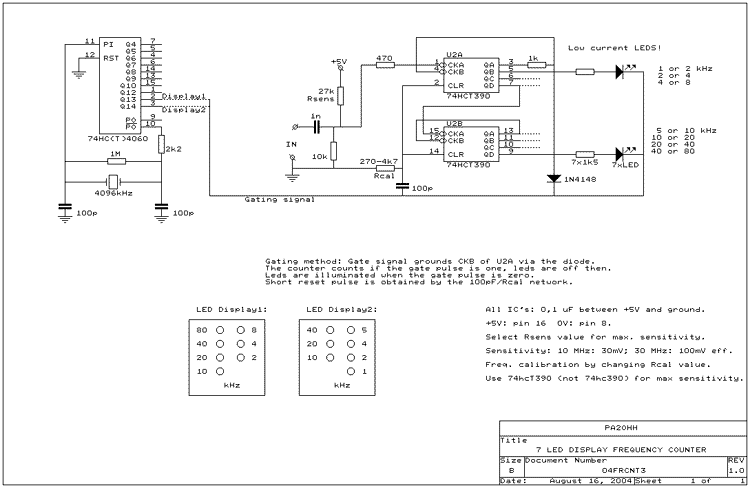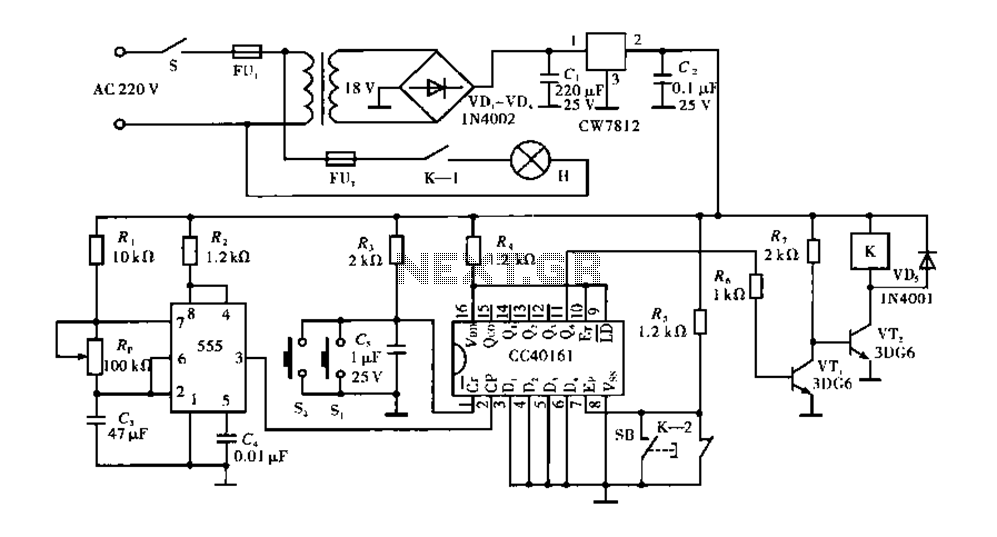
Geiger counter
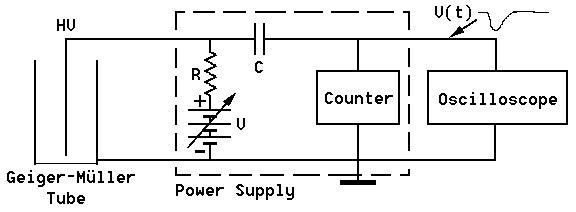
This experiment has two main objectives. First, it aims to familiarize participants with the characteristics of the Geiger-Müller (GM) tube, including its threshold, starting and operating voltages, GM plateau region, and plateau slope. The second objective is to utilize the GM tube for a simple statistical experiment to study various statistical analysis techniques. The basic GM circuit diagram is illustrated in Figure 1. The power supply and counter are integrated into a single unit. The GM tube consists of a cylindrical outer shell that acts as a cathode and is grounded, with a coaxially mounted wire in the center serving as the anode. The tube is filled with an inert gas, typically Argon, at low pressure, along with a small amount of quenching gas, such as ethyl alcohol. A DC power supply applies a voltage across the tube, ranging from a few hundred to over a thousand volts, depending on the specific requirements of the tube. Caution is advised, as the front window of the tube is thin and fragile and should not be touched. Radiation entering the tube ionizes some of the gas atoms, freeing electrons that are accelerated towards the central wire by the electric field, gaining enough energy to cause further ionization. This results in a cascade or avalanche effect that produces a current pulse through the tube. The current pulse generates a voltage pulse across resistor R, which triggers a counting device that records the number of pulses, allowing for the counting of ionizing particles entering the tube. However, no information regarding the initial particle energy is obtained. An oscilloscope is connected to the system to visually observe the pulses from the tube. The quenching additive in the gas effectively absorbs UV photons emitted from the electrodes when ions produced during the multiplication process impact the electrodes. This prevents the liberation of secondary electrons via the photoelectric effect, which could initiate the avalanche process again and lead to catastrophic breakdown of the tube. A radioactive source is placed near the GM tube, and the operating voltage listed on the tube is noted. An exploratory study of the effects of increasing the voltage across the tube is conducted, ensuring not to exceed the operating voltage by more than approximately 100V. The appearance of the pulses on the oscilloscope and the behavior of the counter are observed. The voltage is systematically increased in steps of about 50V, starting at 500V, with adjustments made to the step size as necessary to accurately graph the curve. For each voltage setting, the counting rate (counts per second or Hz) and the pulse height observed on the oscilloscope are recorded and plotted. The GM threshold voltage, which is the voltage at the beginning of the GM plateau, is determined, along with the slope of the plateau (increase in counting rate per 100V). A source that provides approximately 5-6 counts per 10 seconds is arranged, possibly using room background radiation for sufficient counting rate. The number of counts N per 30-second interval is recorded for as many intervals as possible. A graph is plotted with the number of counts per 30 seconds on the abscissa and the frequency of those counts on the ordinate. The number of electron-ion pairs collected when a charged particle traverses a gaseous counter of average size is plotted against the voltage applied between electrodes. The curves represent alpha particles (He nuclei) and beta particles (electrons). The three operational regions are identified as (I) ionization counter, (II) proportional counter, and (IV) Geiger-Müller counter. The mean number of counts <N> and the standard deviation s are calculated. The results should approximate the Poisson distribution, where the probability P of observing N counts in a given time interval is defined.
The Geiger-Müller (GM) tube is a crucial component in radiation detection and measurement applications. Its operation relies on the ionization of gas within the tube, which occurs when ionizing radiation enters and interacts with the gas atoms. The design of the GM tube facilitates the efficient collection of ion pairs, which is essential for generating detectable signals. The cylindrical cathode and central anode create a uniform electric field, ensuring that the electrons produced by ionization are directed towards the anode.
The quenching gas plays a vital role in preventing continuous discharge and ensuring the tube can reset after each detection event. Without this quenching mechanism, the tube could enter a state of continuous conduction, rendering it ineffective for further measurements. The integration of the power supply and counter into a single unit simplifies the experimental setup, allowing for streamlined operation and data collection.
The statistical analysis performed during this experiment provides insights into the behavior of ionizing radiation and the response of the GM tube under varying voltage conditions. By systematically varying the voltage and recording the counting rate, one can observe the characteristics of the GM plateau, which is indicative of the tube's operational efficiency. The relationship between voltage and counting rate reveals essential information about the tube's performance and the underlying physics of ionization processes.
The use of an oscilloscope in conjunction with the GM tube enhances the understanding of pulse formation and allows for real-time observation of the detection events. This visual feedback is invaluable for interpreting the results and understanding the dynamics of the ionization process.
Overall, this experiment not only demonstrates the principles of radiation detection but also reinforces the importance of statistical methods in analyzing experimental data, contributing to a deeper understanding of the behavior of ionizing radiation and the performance characteristics of GM tubes.This experiment has two main objectives. First, we will become familiar with the characteristics of the Geiger-MG ller (GM) tube, including the properties of threshold, starting and operating voltages, GM plateau region and plateau slope. Then we will use the GM tube to perform a simple statistical experiment for the purpose of studying some of th
e techniques of statistical analysis. The basic GM circuit diagram is shown in Figure1. The power supply and counter are one unit. The GM tube itself consists of a cylindrical outer shell which serves as a cathode and is grounded. In the center it has a coaxially mounted wire serving as anode. The cylinder is filled with an inert gas (typically Argon) at low pressure plus a small amount of ``quenching`` gas (e. g. ethyl alcohol). A DC power supply provides a voltage across the tube in the range of a few hundred to over a thousand Volts depending on the requirements of the particular tube.
Caution: The front window of the tube is very thin and delicate and should not be touched. Radiation entering the tube can ionize some of the gas atoms, thereby freeing electrons which are accelerated towards the central wire by the electric field and gaining enough energy to cause further ionization. The result is a ``cascade`` or ``avalanche`` effect which produces a current pulse through the tube. This current pulse causes a voltage pulse across resistor R, which is used to trigger a counting device that records the number of pulses.
We are thus able to count the number of ionizing particles entering the tube. There is, however, no information about the initial particle energy. An oscilloscope is connected to the system to allow us to visually observe the pulses from the tube. The purpose of the quenching additive to the gas is to effectively absorb UV-photons emitted from the electrodes when the ions produced in the multiplication process impact on the electrodes. Such photons may otherwise liberate secondary electrons (via the photo-electric effect) which may initiate the avalanche process all over again, thereby leading to catastrophic breakdown of the tube (i.
e. a spark). Place a radioactive source near the GM tube. Note the operating voltage listed on the tube. Make an exploratory study of the effect of turning up the voltage across the tube. Do not exceed the operating voltage by more than about 100V! Note the appearance of the pulses on the oscilloscope and the behaviour of the counter. Systematically increase the voltage in steps of about 50V, starting at 500V. Decrease or increase the step size as necessary to see the shape of the curve you are graphing. For each voltage setting, record and plot the counting rate (counts/second or Hz) and the pulse height as seen on the oscilloscope. Determine the GM ``threshold voltage``, i. e. the voltage at the beginning of the GM plateau. Also measure the slope of the plateau (increase in counting rate per 100V). Arrange a source to give about 5-6 counts per 10sec interval (perhaps room background will give you sufficient counting rate).
Record the number of counts N per 30sec interval for as many intervals as you can. Plot the number of counts per 30sec interval as the abscissa and the number of times that number of counts occurred as the ordinate of a graph. The number of electron-ion pairs collected when a charged particle traverses a gaseous counter of average size, plotted against the voltage applied between electrodes.
The curves are for a-particles (He nuclei) and b-particles (electrons). Note the three regions of operation as an (I) ionization counter, (II) proportional counter, and (IV) Geiger-MG ller counter. Determine the mean number of counts and the standard deviation s. The result should approximate the ``Poisson`` distribution, for which the probability P for observing N counts in a given time interval is given by
🔗 External reference
The Geiger-Müller (GM) tube is a crucial component in radiation detection and measurement applications. Its operation relies on the ionization of gas within the tube, which occurs when ionizing radiation enters and interacts with the gas atoms. The design of the GM tube facilitates the efficient collection of ion pairs, which is essential for generating detectable signals. The cylindrical cathode and central anode create a uniform electric field, ensuring that the electrons produced by ionization are directed towards the anode.
The quenching gas plays a vital role in preventing continuous discharge and ensuring the tube can reset after each detection event. Without this quenching mechanism, the tube could enter a state of continuous conduction, rendering it ineffective for further measurements. The integration of the power supply and counter into a single unit simplifies the experimental setup, allowing for streamlined operation and data collection.
The statistical analysis performed during this experiment provides insights into the behavior of ionizing radiation and the response of the GM tube under varying voltage conditions. By systematically varying the voltage and recording the counting rate, one can observe the characteristics of the GM plateau, which is indicative of the tube's operational efficiency. The relationship between voltage and counting rate reveals essential information about the tube's performance and the underlying physics of ionization processes.
The use of an oscilloscope in conjunction with the GM tube enhances the understanding of pulse formation and allows for real-time observation of the detection events. This visual feedback is invaluable for interpreting the results and understanding the dynamics of the ionization process.
Overall, this experiment not only demonstrates the principles of radiation detection but also reinforces the importance of statistical methods in analyzing experimental data, contributing to a deeper understanding of the behavior of ionizing radiation and the performance characteristics of GM tubes.This experiment has two main objectives. First, we will become familiar with the characteristics of the Geiger-MG ller (GM) tube, including the properties of threshold, starting and operating voltages, GM plateau region and plateau slope. Then we will use the GM tube to perform a simple statistical experiment for the purpose of studying some of th
e techniques of statistical analysis. The basic GM circuit diagram is shown in Figure1. The power supply and counter are one unit. The GM tube itself consists of a cylindrical outer shell which serves as a cathode and is grounded. In the center it has a coaxially mounted wire serving as anode. The cylinder is filled with an inert gas (typically Argon) at low pressure plus a small amount of ``quenching`` gas (e. g. ethyl alcohol). A DC power supply provides a voltage across the tube in the range of a few hundred to over a thousand Volts depending on the requirements of the particular tube.
Caution: The front window of the tube is very thin and delicate and should not be touched. Radiation entering the tube can ionize some of the gas atoms, thereby freeing electrons which are accelerated towards the central wire by the electric field and gaining enough energy to cause further ionization. The result is a ``cascade`` or ``avalanche`` effect which produces a current pulse through the tube. This current pulse causes a voltage pulse across resistor R, which is used to trigger a counting device that records the number of pulses.
We are thus able to count the number of ionizing particles entering the tube. There is, however, no information about the initial particle energy. An oscilloscope is connected to the system to allow us to visually observe the pulses from the tube. The purpose of the quenching additive to the gas is to effectively absorb UV-photons emitted from the electrodes when the ions produced in the multiplication process impact on the electrodes. Such photons may otherwise liberate secondary electrons (via the photo-electric effect) which may initiate the avalanche process all over again, thereby leading to catastrophic breakdown of the tube (i.
e. a spark). Place a radioactive source near the GM tube. Note the operating voltage listed on the tube. Make an exploratory study of the effect of turning up the voltage across the tube. Do not exceed the operating voltage by more than about 100V! Note the appearance of the pulses on the oscilloscope and the behaviour of the counter. Systematically increase the voltage in steps of about 50V, starting at 500V. Decrease or increase the step size as necessary to see the shape of the curve you are graphing. For each voltage setting, record and plot the counting rate (counts/second or Hz) and the pulse height as seen on the oscilloscope. Determine the GM ``threshold voltage``, i. e. the voltage at the beginning of the GM plateau. Also measure the slope of the plateau (increase in counting rate per 100V). Arrange a source to give about 5-6 counts per 10sec interval (perhaps room background will give you sufficient counting rate).
Record the number of counts N per 30sec interval for as many intervals as you can. Plot the number of counts per 30sec interval as the abscissa and the number of times that number of counts occurred as the ordinate of a graph. The number of electron-ion pairs collected when a charged particle traverses a gaseous counter of average size, plotted against the voltage applied between electrodes.
The curves are for a-particles (He nuclei) and b-particles (electrons). Note the three regions of operation as an (I) ionization counter, (II) proportional counter, and (IV) Geiger-MG ller counter. Determine the mean number of counts
🔗 External reference
